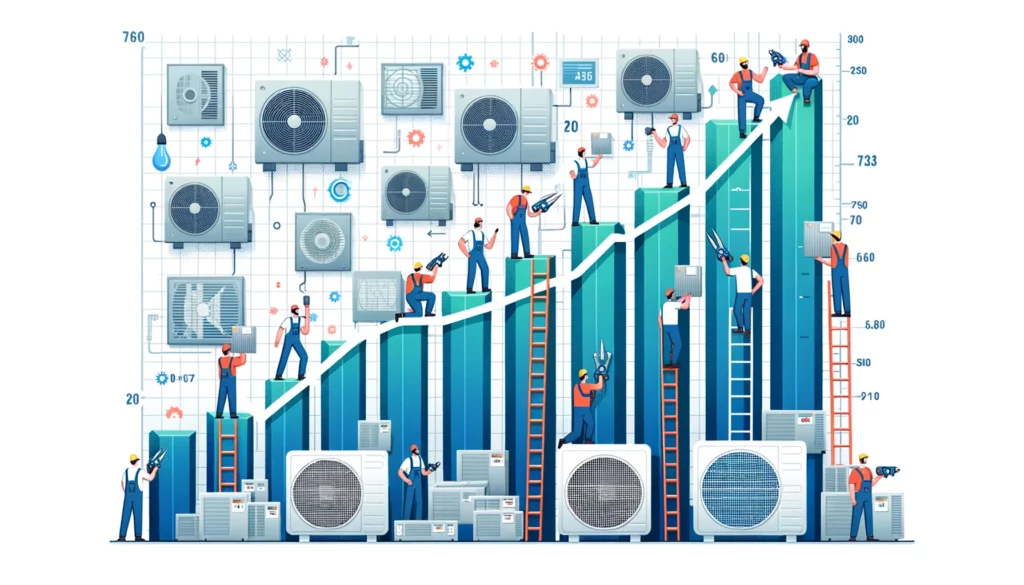U.S. HVAC Systems Market Dynamics
The U.S. HVAC systems market, as per Grand View Research, was valued at USD 17.15 billion in 2022 and is projected to grow at a CAGR of 6.5% from 2023 to 2030. This growth is attributed to factors such as global warming, extreme climatic conditions, and a burgeoning real estate market. The U.S. government has implemented standards to monitor HVAC systems operations and has standardized manufacturing processes to reduce environmental hazards and carbon emissions. Furthermore, tax credits of approximately 20-30% of the installation cost on energy-efficient products are offered. The U.S. AC systems market is the second-largest globally, with over 70% of U.S. homes having ACs installed, presenting a 20-30% market opportunity for OEMs in terms of new unit sales and replacement demand due to aging products.
Producer Price Index and Its Implications
The Producer Price Index (PPI) for HVAC and Commercial Refrigeration Equipment was 218.180 for August 2023. This index measures the average change over time in the selling prices received by domestic producers for their output in this industry. The PPI is a vital indicator for analyzing trends in pricing and potentially, inflation, within the HVAC and commercial refrigeration equipment industry.
Residential HVAC Installation Costs and Factors
According to HomeGuide, the cost of HVAC replacement ranges from $5,000 to $11,000, which includes a new furnace and AC unit. If the installation involves new ductwork, the cost escalates to between $7,000 and $16,000. Various factors influence these costs, such as the size of the HVAC unit, the length of the ductwork, and the type and brand of the HVAC system. The cost can also be influenced by the house size, with HVAC systems costing $3 to $6 per square foot, translating to $6,000 to $12,000 for a 2,000-square-foot house.
Commercial HVAC Upgrade Costs and Benefits
Sanalife provides a comprehensive guide on estimating the costs and benefits of upgrading commercial HVAC systems. The costs of HVAC upgrades can be influenced by various factors, including the age and current state of the existing system, and the specific requirements for improving air quality. Some average costs mentioned include HVAC unit replacement ($5,000 to $10,000 or $25 to $60 per square foot), standard HVAC ductwork replacement ($12 to $25 per linear foot), and labor ($75 to $150 per hour).
Importance of Proper Residential HVAC Installation Practices
The U.S. Department of Energy emphasizes that the quality of HVAC installation significantly impacts energy consumption and overall system performance. Studies have found that many HVAC systems are not installed correctly, leading to increased energy use and costs, as well as decreased comfort and system life. Common installation deficiencies include incorrect refrigerant charge, incorrect airflow, and leaky ducts.
Conclusion
The HVAC installation rate trends and market dynamics are influenced by various factors, including government regulations, technological advancements, and the current economic and environmental conditions. The U.S. HVAC market is experiencing growth, driven by factors such as global warming, extreme climatic conditions, and the real estate market. The costs associated with HVAC installation and upgrades are influenced by multiple factors, including unit size, ductwork, and brand. Furthermore, the quality of HVAC installation is paramount in ensuring optimal system performance and energy efficiency. Understanding these aspects is crucial for stakeholders, consumers, and policymakers to make informed decisions and develop strategies in the HVAC market.


